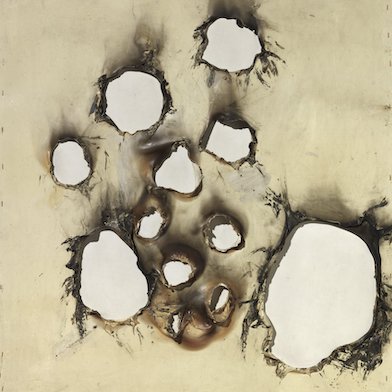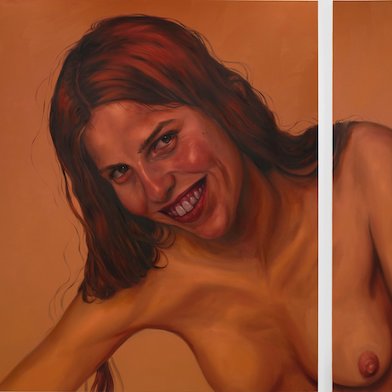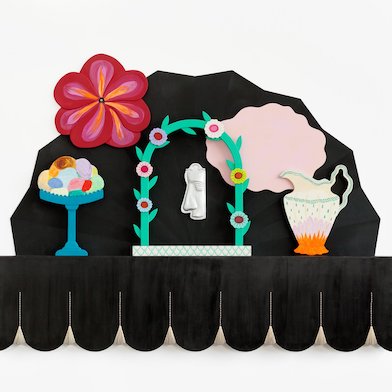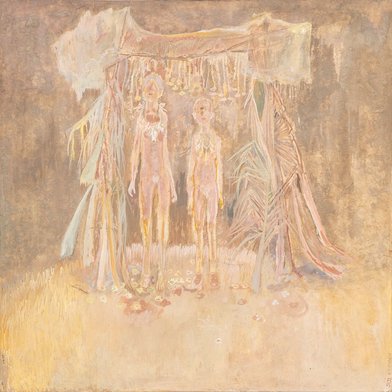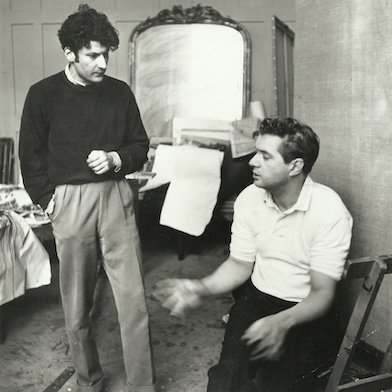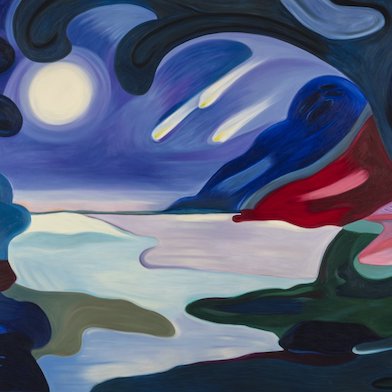Open: Wed-Fri 12-5pm, Sat 1pm-6pm
Visit
Paul Bonnet: Abeyance
MAMOTH, London
Fri 22 Mar 2024 to Sat 4 May 2024
3 Endsleigh Street, WC1H 0DS Paul Bonnet: Abeyance
Wed-Fri 12-5pm, Sat 1pm-6pm
Artist: Paul Bonnet
MAMOTH presents the London debut of French artist Paul Bonnet with the solo show Abeyance.
Artworks

Oil on canvas
100 × 70 cm
© Paul Bonnet. Courtesy of MAMOTH, London UK. Photo: Damian Griffiths

Oil on canvas
110 × 118 cm
© Paul Bonnet. Courtesy of MAMOTH, London UK. Photo: Damian Griffiths
Added to list
Done
Removed
Installation Views
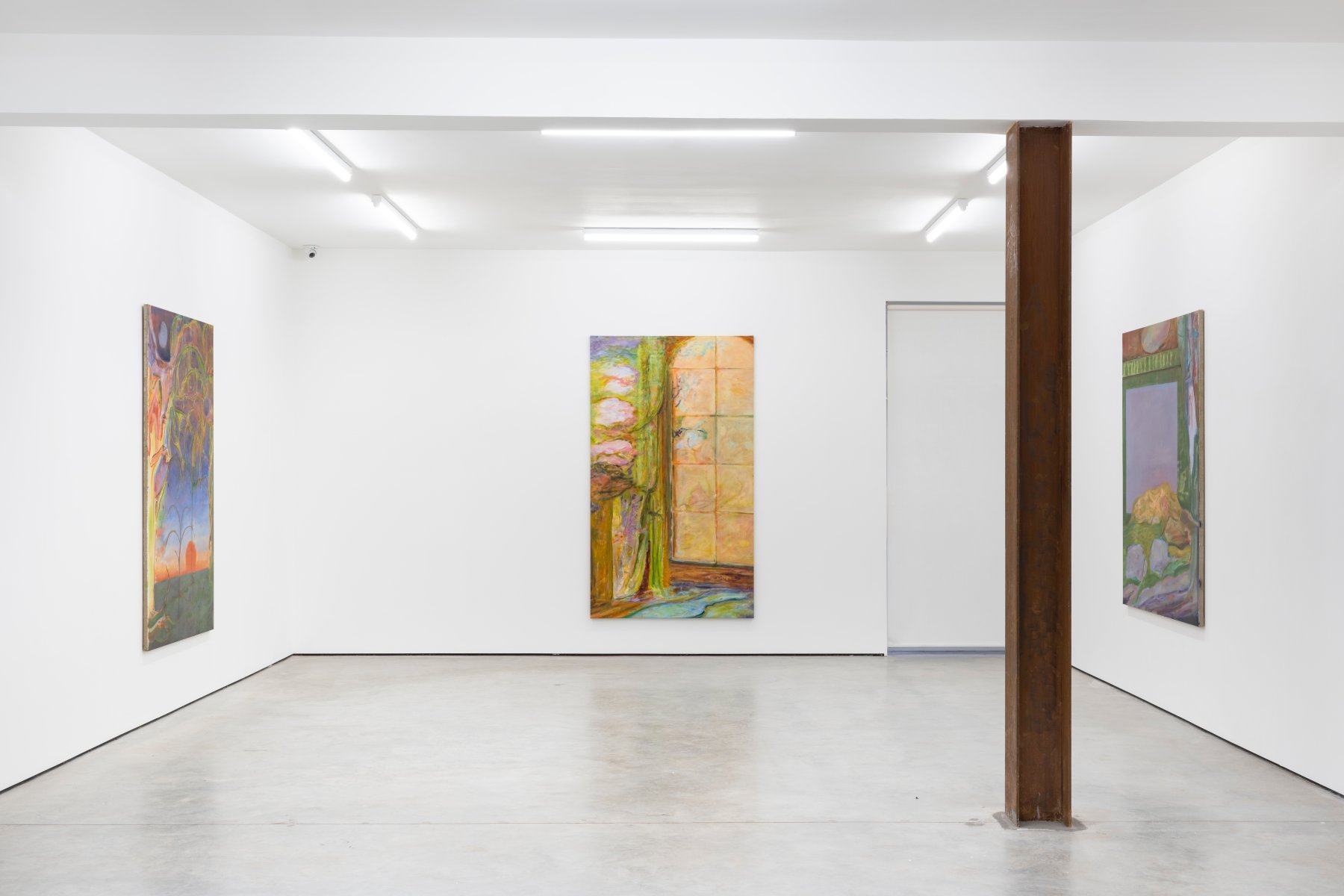
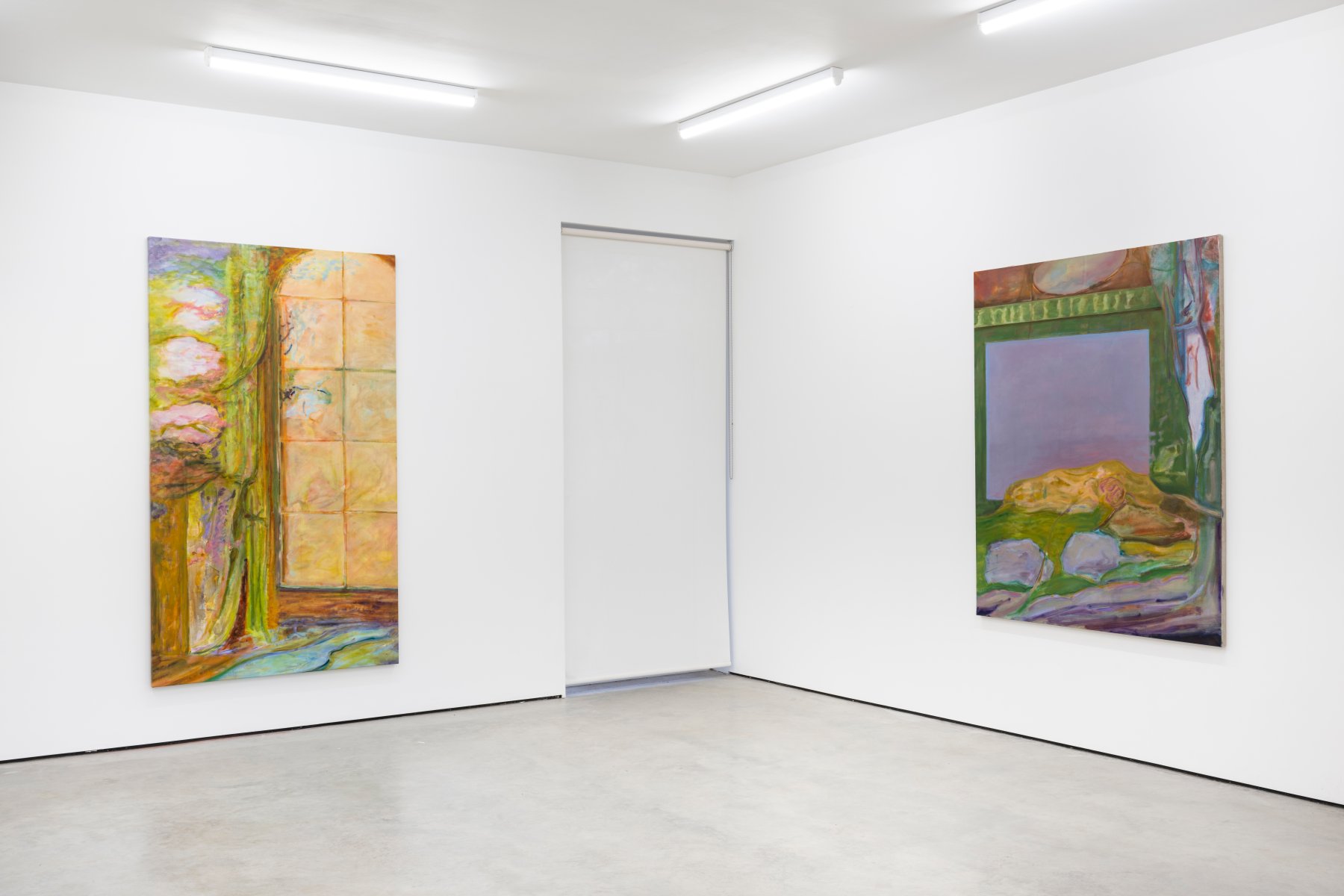
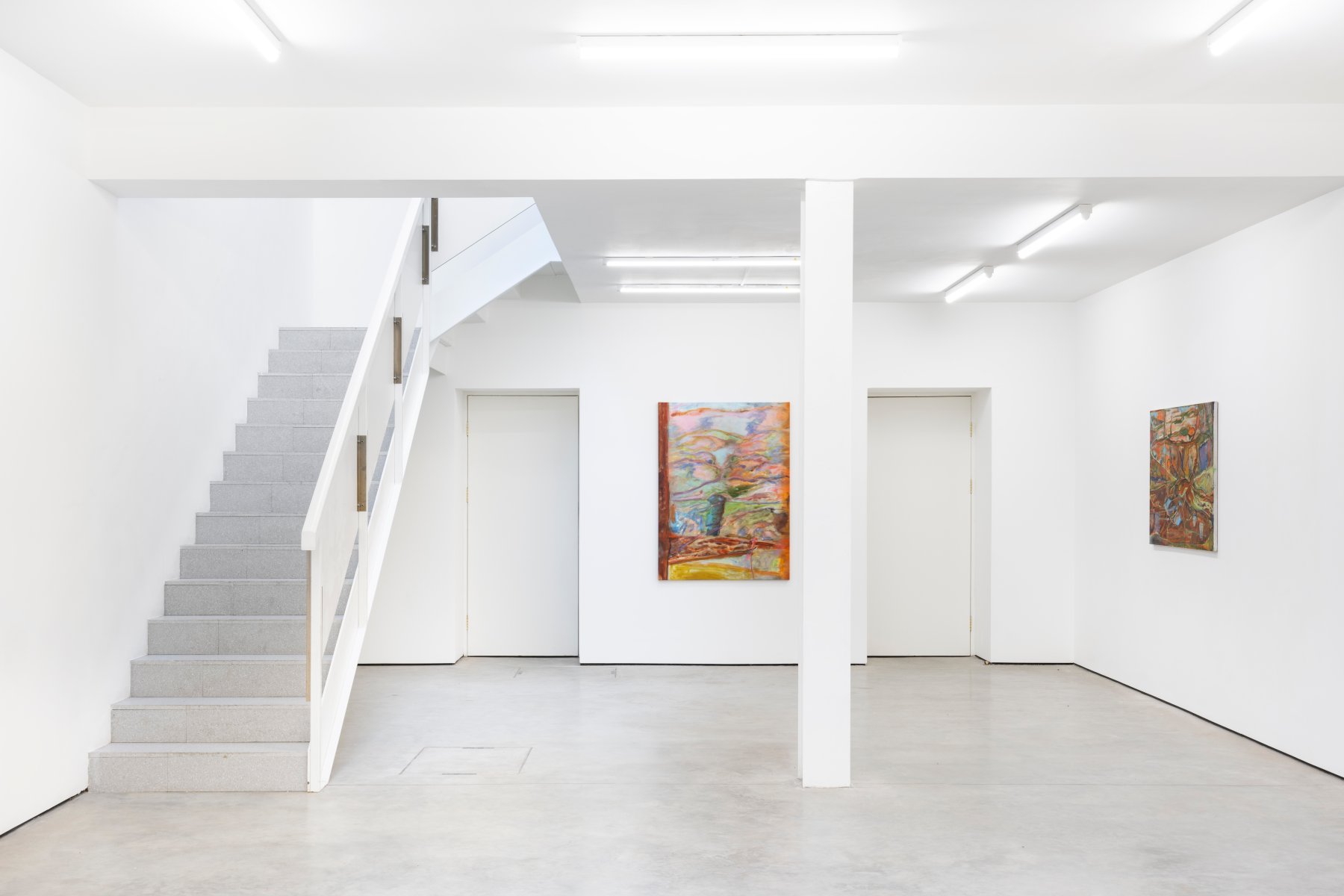
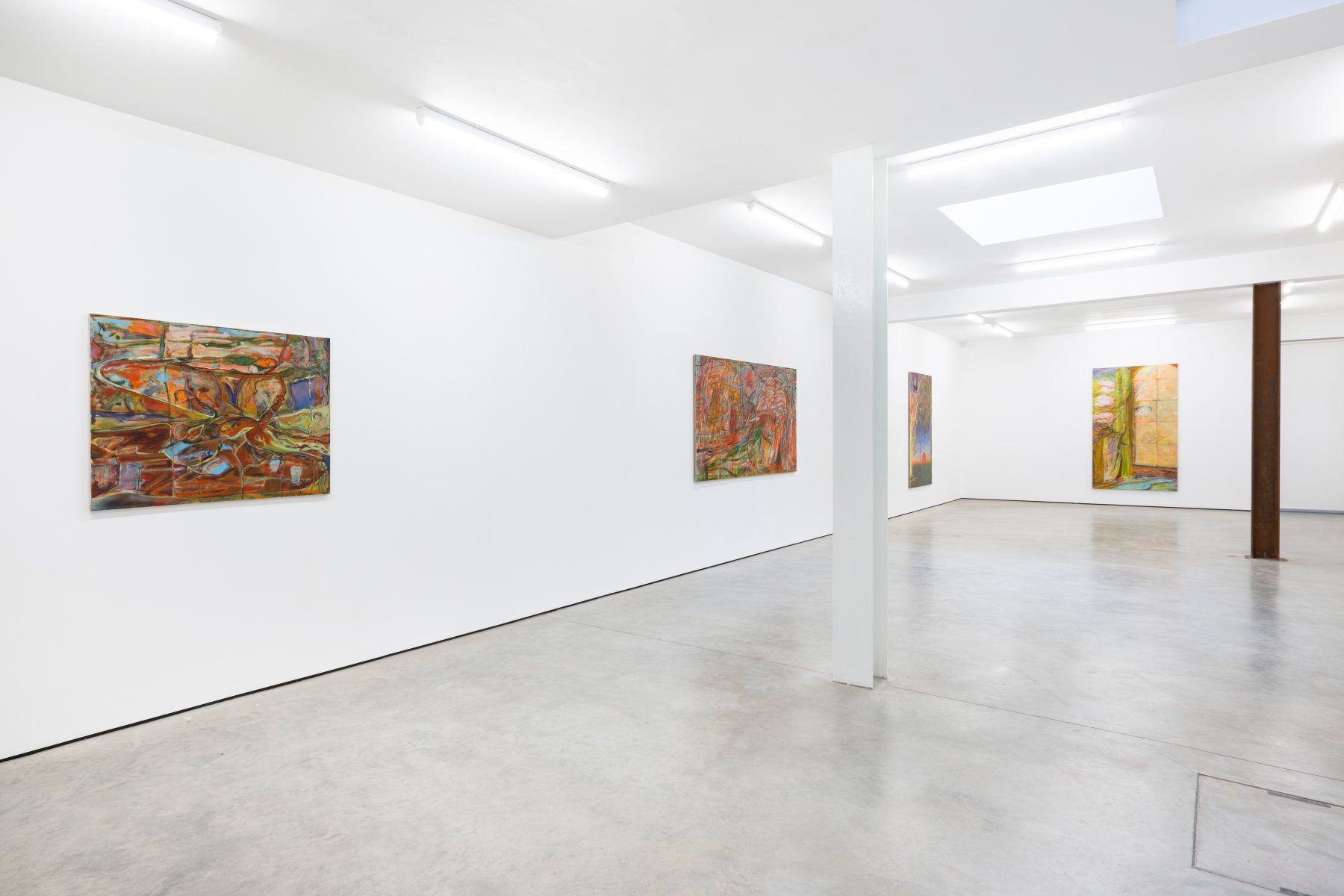
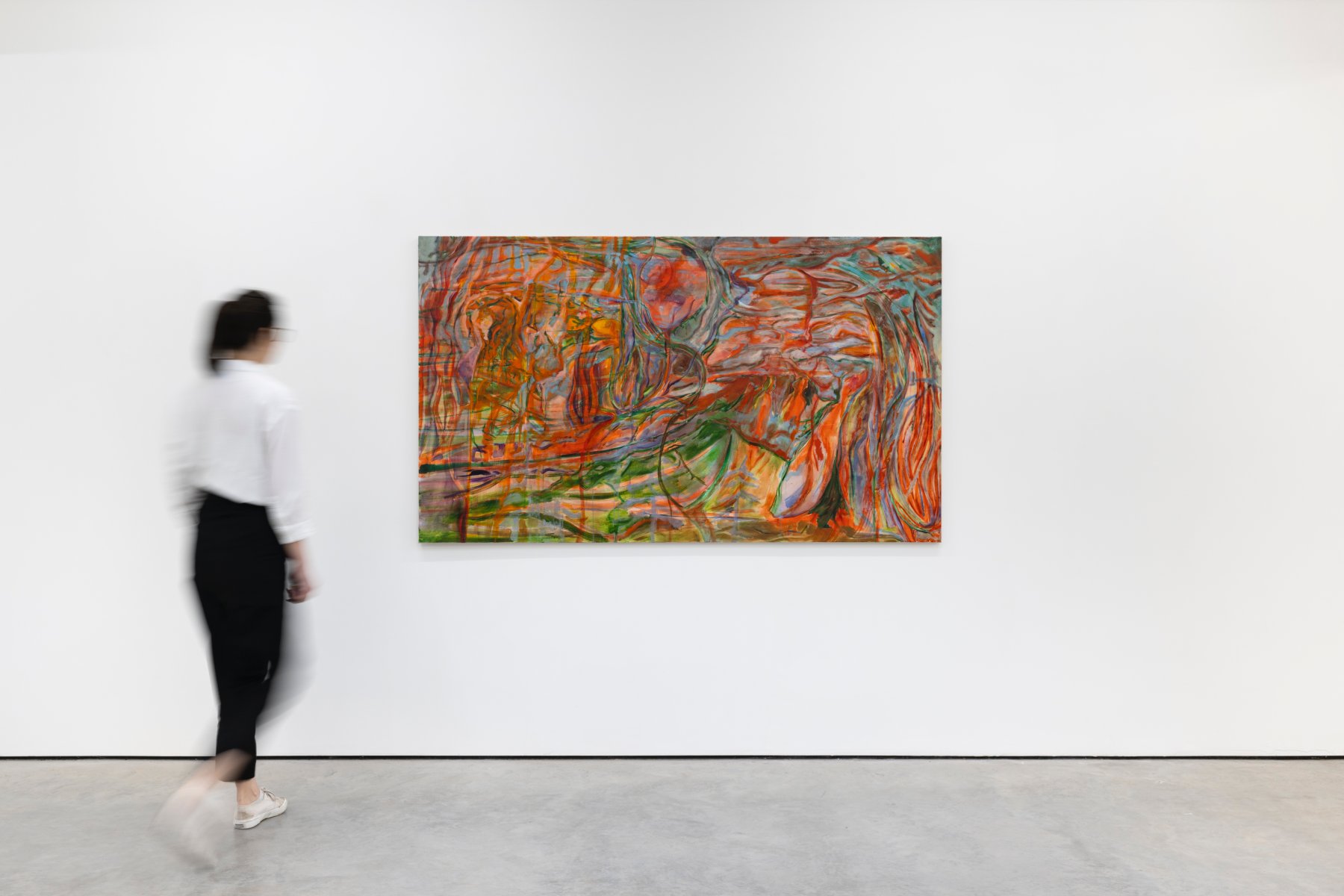
Paul Bonnet's haunted dreamscapes have the appearance of molten wax. The oil has been daubed and smeared onto the canvas forming stratigraphic layers. They form the depths and shallows of an imagined environment depicted long after the human has finished figuring themselves at its centre. Bonnet's scenes of overgrowth, collapse and ruin draw the viewer to consider what comes inevitably next, far off in the centuries that will follow the impending collapse of our Anthropocene.
The series of seven large canvasses depict Ballardian vistas that call to mind his post-apocalyptical novel The Drowned World. Sinews reminiscent of the decaying human body, decrepit leftovers of the domestic rooms of Parisian bâtiments, and the creeping tendrils of a jungle home to a tropic pushed unnaturally northward bleed together in an act of painterly speculative abstraction. Human forms, their bodies and their cityscapes, have been broken down into object matter by an environment that has adapted in our absence, persisted, and here thrives. The paintings catch in snapshot these decaying remains long into a process of digestion, and reconstitution into something else. In Figures in Landscape (all works 2024) and Lie torpid (coral pillows) what once was human sobs before the floating orbs of other astral planes opened into the landscape, or lays underneath a thin shroud before a large window showing an empty sky at late-twilight. Walls, decaying curtain fabric, window frames and pillows in this image present a fossilised human interior, a domestic life long since bereft of any sense of being lived in. In both images, though the leavings of human gestures are present upon the objects, they have long since calcified into archaeological matter. They look something like the plaster casts of victims of the catastrophe at Pompeii, huddled into bundled hints of a body made ash.
The post-human corpse is present also in Fortunate Hours, where the celestial bodies of a cresting moon and waning sun follow one another in cycle through the crepuscule, far off behind lilting tendrils of willow trees. High up within the trees, bent human arms hang. Their revivified fingers reach out from among the branches. This is again present in Dinner Scene with Embedded Fossil. In the centre of the canvas a large cockroach scuttles among empty drinking vessels, its wings poised to take flight. The underneath of its carapace looks back at the viewer from the scene of a dinner table long abandoned, formed of the empty features of two partial human faces ripped from their former hosts and now repurposed.
The title of the show and this element of digestion and reconstitution of the human body gesture towards the work of another influenced by Ballard, Jeff VanderMeer and his Area X, with that geography’s mysterious dissolution and recalibration of human genetic information into other forms, other modes of material being. There is a fragmentary narrative embedded in these images that pulls the viewer into a process of decryption in a similar sense to VanderMeer’s writing, and yet, similarly, these fragments have an organic quality to them.
As though they are in the process of naturally growing amongst one another, rather than having been broken apart by human hands.
This is the product of Bonnet’s painting process, whereby each canvas is progressively formed by a slow action of layering shape and form over dissolute blocks of smeared paint. What earlier in the process was once a woman looking from a window gradually, over time, accrues oil, and, for example in From the quiet rooms of our houses, becomes a Greco-Roman pillar overwhelmed by humidity, moss and creeping ivy. The greased film across the windows make of the glass a tiled and shut up wall. And yet snippets of the outside, where that woman’s hand has dispersed the dirt from what was once glass remains. In this sense, these paintings are haunted by a folding of their own formal realities, by the practice of their own process of creation and recreation over time, what the artist refers to as a stratigraphic act of painting: a finding of meaning within the tangible engagement of oil on canvas.
Through the layering process of their creation, the sense that these images have been repeatedly folded in upon themselves, and the sense that the landscapes on view come long after a human might have eyes and cognition with which to view them, the paintings are imbued with impossibility. A ghostly congealing of things we are not supposed to see. In the world here conceived, there would be no human to report what has become of humans’ works of intervention on this planet. The world Bonnet has drawn out from his medium here grapples with the horrific realisation of finitude, that one day, there will no longer be someone here to see, the idea that one day the theatre of humanity will end. And yet, deconstituted, reconstituted, recreated, things go on inevitably without us to report them. In presenting these fossils of our future, Bonnet finds form in formlessness, vision in blindness, and a world thriving with us removed from its figurative centre.
Text by Andrew Hodgson
Artist Bio:
Paul Bonnet (b.1990) lives and works in Paris, France.
He graduated with an MFA from the Ecole Nationale Supérieure d’arts Paris- Cergy in 2015. His exhibition at MAMOTH marks his London debut and his first solo exhibition in the United Kingdom. Recent exhibitions include: Abeyance, MAMOTH, London UK (2024); Breathless, Galerie Myriam Chair, Paris (2023); Aquarium & Heart, Piero Heliczer and the Dead Language, Bagnoler, Paris, France (2022); Homesick, Shivers Only, Paris (2021); Paul Bonnet and Kaoru Arima, Frieze, London, UK (2020); Your Friends and Neighbours, High Art, Paris, France (2020); Common task, Eduard Montassut, Paris (2020); Reopening Group Show, Tonus Paris (2019); Silhouette by a Dumpster, Real Positive, Cologne, Germany (2017); Tonus at Paris Internationale, Paris, France (2017); Night, White Crypt, London, UK (2017); How far to open up?, Forum Stadtpark, Graz, Austria (2017), Opening Group Show, Tonus, Paris, France (2017), as well as a residency at 'Rubber Room' at Treignac Project, France (2022) amongst others.
